
Many times anxiety may manifest with a rapid heart rate, extreme fear, and feeling a nervousness. In such conditions, through Pranayama breathing exercises, we can voluntarily control our automatic function of the body to stop feeling anxious.
Breathing exercises we do in Pranayama are actually the body’s language to communicate with the brain. So, by manipulating our breathing pattern in those critical times, our respiratory system direct positive signals to the brain. In response to that, the brain controls our emotions, thoughts & behavior to come out of anxiety instantly.
These pranayama breathing techniques will help you in Anxiety:
1. Sama Vritti Pranayama – Box Breathing
Did you notice how your breathing rate goes higher than normal when anxiety or a panic occur?
During these times, you take in too much oxygen and get rid of too much carbon dioxide too quickly. This shallow & rapid breathing causes ‘shortness of breath’ and can even cause you to faint.
Deep breathing can help you return to a stable state during this kind of anxiety.
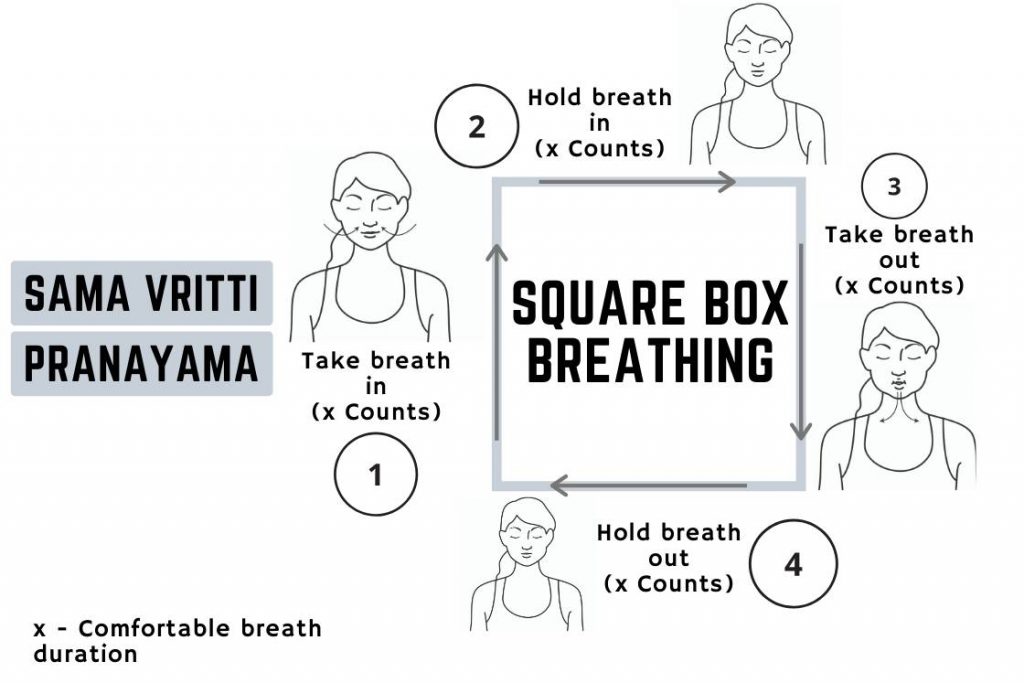
In Sama Vritti Pranayama aka box breathing, we breathe in and out equally while adding adequate retention between inhaling & exhaling. It makes your breathing deep enough to cope with the effect of anxiety.
- Sit comfortably either on a chair or on the floor in a cross-legged position.
- Close your eyes and slowly count 1-2-3-4 as you inhale through your nose. Fill the oxygen completely into the lungs.
- Hold the breathe in as you count 1-2-3-4 at the same pace as before.
- Exhale for the same four-second count.
- At the end of exhalation, hold the breathe again for the same four-second count.
- Repeat the process for 3 more rounds.
However, the breath counts can vary with an individual’s capacity to breathe but make sure count is the same for each step.
Research
In a study [efn_note] The effect of pranayama on test anxiety and test performance https://www.ncbi.nlm.nih.gov/pmc/articles/PMC3573544/ [/efn_note], the student’s anxiety level is measured during the examination and it has found a significant reduction in anxiety level after practicing this simple technique before the examination.
2. Anulom Vilom Pranayama – Alternate Breathing
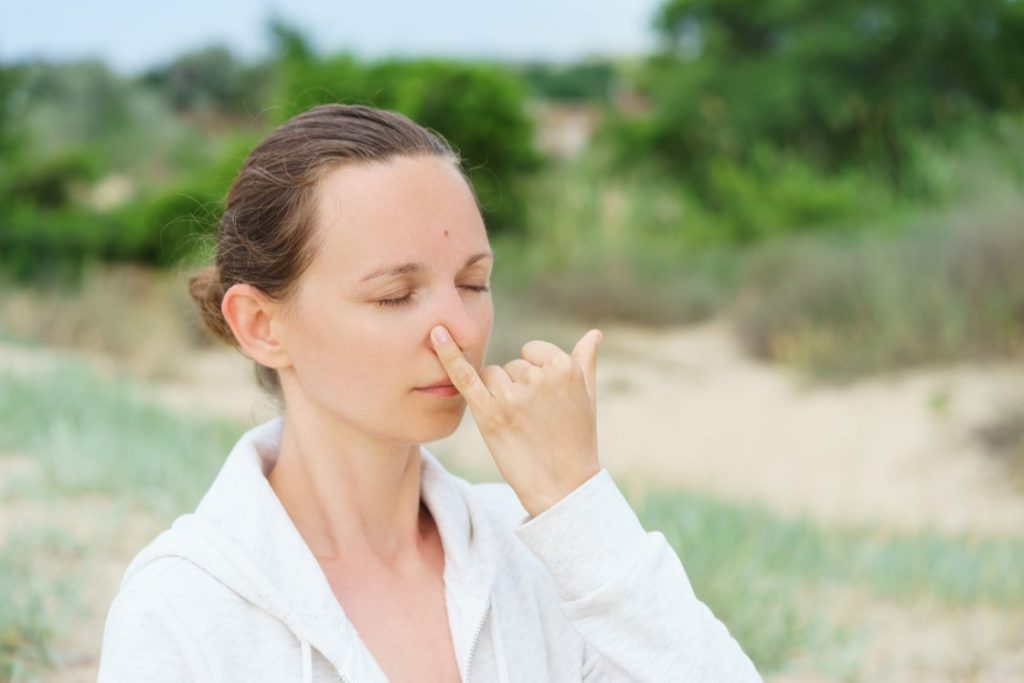
The Left and right hemisphere of the brain have their own traits when occur in a balanced state let the body function efficiently.
But when it’s out of balance, the brain automatically processes information through the stronger hemisphere [efn_note] When the Brain is out of Synch, the World is out of Balance http://www.homeeddirectory.com/blog/when-brain-out-synch-world-out-balance [/efn_note] that can make a person anxious about a particular situation or decision.
Anulom Vilom breathing technique is designed to get control on the working of both hemispheres of the brain. In this breathing, we breathe in & out alternatively through the right and left nostril that balances the respective side of the brain.
- Sit in a meditative pose on the floor (Either in Padmasana, Sukhasana, or Siddhasana).
- Close the left nostril with ring & little finger and take a deep breath in through right nostril.
- At the end of inhalation, close the right nostril with thumb and exhale out through the opposite nostril (left one).
- Inhale through left one and exhale out through right in the same manner.
- Repeat this cycle of inhaling and exhaling through either nostril up to 10 times.
In yogic terminology, breathing in and out alternatively like in this Pranayama purifies the Nadis (energy channels of the body). On Nadis’ purification, the better transmission of energies takes place to bring an imbalanced hemisphere back to the normal condition.
Research
In a study, the effect of Anulom Vilom is evaluated in aged people who were facing a lot of physical and mental problems including anxiety & depression. Anulom vilom pranayama’s three months of regular practice has reduced their anxiety level and improved life quality.
3. Ujjayi Pranayama – Ocean Breathing
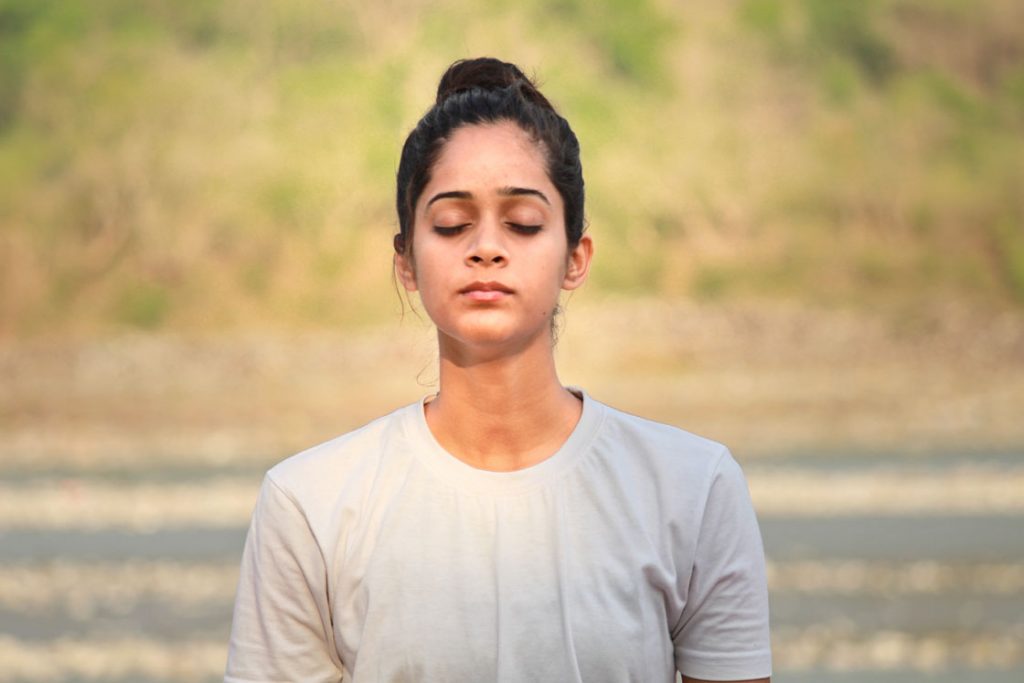
Sometimes instead of breathing deeply in, breathing out feels more relaxing. Indeed, longer or deep exhalation is the body’s mechanism to switch from fight-or-flight response (sympathetic nervous system) to rest-and-digest response (parasympathetic nervous system).
During stressful situations, breathing deeply in Ujjayi pranayama activates the parasympathetic nervous system which on activating, turns off the stress reaction. Ujjayi does this:
- By producing a sound like ocean waves originating in the throat that stimulates the Vagus nerve. This nerve secretes acetylcholine that lowers the heart rate in stressful situations.
- By concentrating on the ocean waves sound we get instant relief from the mind’s chatter that causing anxiety.
4. Sitali Pranayama – Cooling Breath
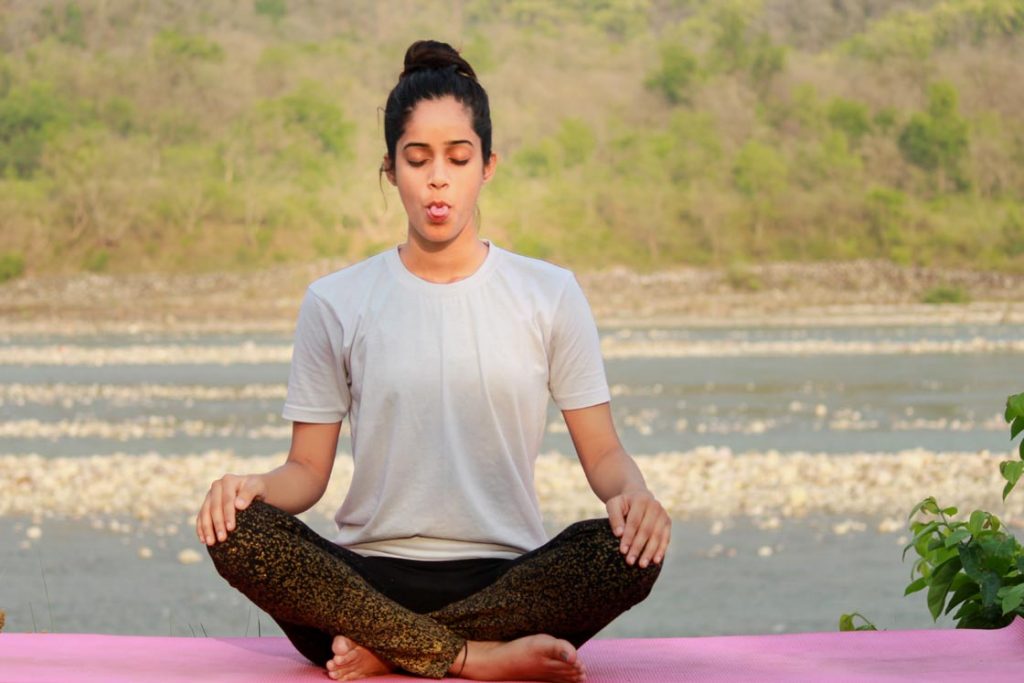
Breathing rapidly, tensed muscles, sweating and a pounding heart are a few things that boost up the effect of anxiety. In deep down, these factors are associated with increased body temperature, internally or externally.
In Such conditions, Sitali pranayama cools down the body and mind that freezes anxiety by its chilling & moistening effect. Due to which it is also known as ‘Cooling Breath‘. To begin sitali pranayama, sit in a comfortable posture:
- Roll your tongue in the U-Shaped structure from sides.
- Inhale, take a deep breath in through rolled tongue. Feel the moisten air entering into your lungs through the mouth.
- Exhale, close your mouth, and breath out the air through the nose.
Research
Research has shown [efn_note]Impact of Sheetali and Sheetkari Pranayama on the Topographic Mapping of the Brain Waves http://iosrphr.org/papers/v4i10/J041051057.pdf [/efn_note], Sitali along with sitkari pranayama decrease the beta band power and increase in the alpha, delta, and theta band power.
Beta band power is prominently seen in a highly focused, agitated and attentive brain as in cases of problem-solving or in fear, anxiety, etc. whereas alpha and delta bands are mostly seen in the calm and quiet brain
5. Bhramari Pranayama – Bee Breathing

Among all breathing techniques, bhramari pranayama is most relaxing to calm the mind and reduce the stress response.
In Bhramari Pranayama, while exhaling a vibratory sound is produced that calms down overstimulated brain centers. Indeed, the working mechanism of bhramari pranayama for anxiety lies behind the self-induced humming sound in this practice that resembles the OM mantra repetition technique [efn_note] Effects of Bhramari Pranayama on health – A systematic review https://www.ncbi.nlm.nih.gov/pmc/articles/PMC5755957/ [/efn_note]. To do this pranayama technique, sit comfortably:
- Close your ears with with index finger.
- Inhale shortly
- Exhale deep, while exhaling emphasise to breath come out through throat. It will produce a vibrating sound in neck, jaws, face and forehead area.
- Inhale again and exhale in the same manner.
- Repeat the process for 10 rounds.
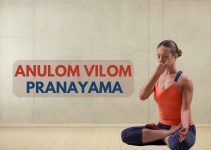
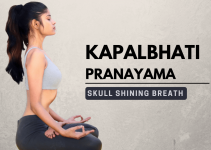
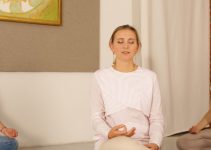


Thank you very much!
Hi! Thank you for your wonderfully clear info and guidance! It is rare to find short and concise material on Pranayama. A question: Do you suggest these 5 breaths as a session, one after the other or should one practice only one of them at a time? 🙏💕
These five pranayamas can be practiced together in a single session if you have dedicated time for your practice. Alternatively, if you have limited time, practicing any one of these can help calm the mind and ease anxiety. Namaste 🙏